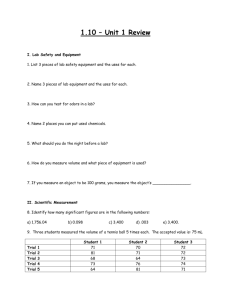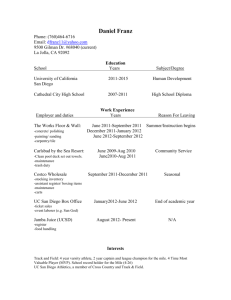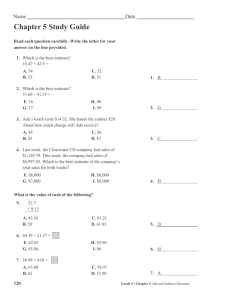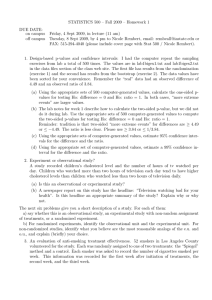Chapter 3 Section 2
advertisement
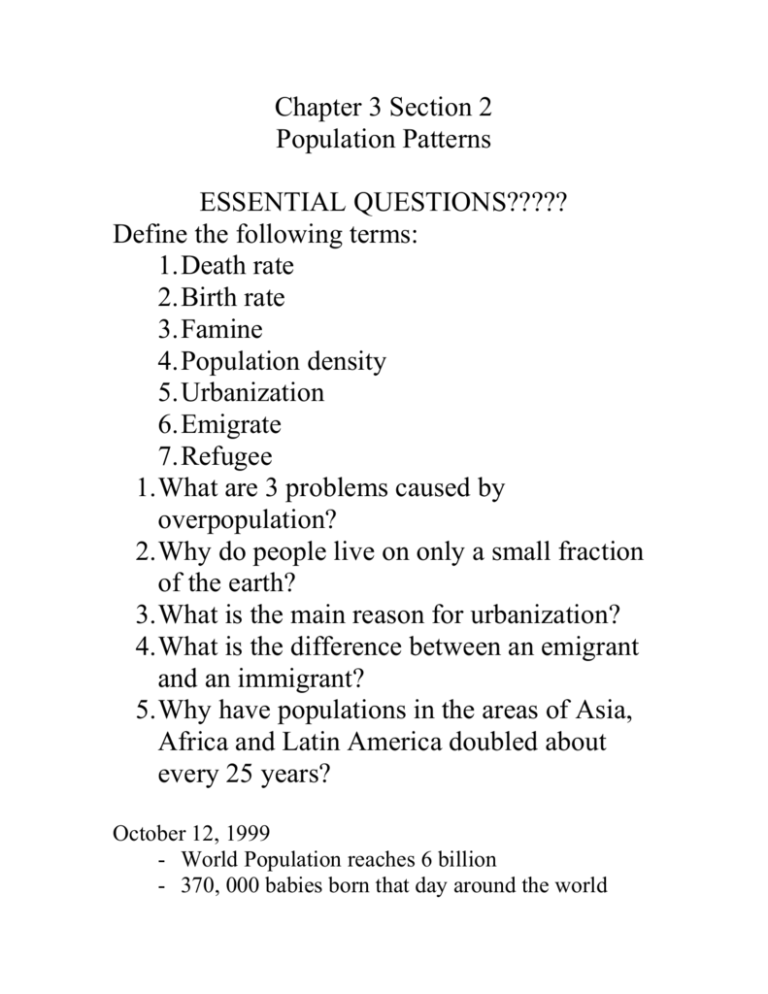
Chapter 3 Section 2 Population Patterns ESSENTIAL QUESTIONS????? Define the following terms: 1. Death rate 2. Birth rate 3. Famine 4. Population density 5. Urbanization 6. Emigrate 7. Refugee 1. What are 3 problems caused by overpopulation? 2. Why do people live on only a small fraction of the earth? 3. What is the main reason for urbanization? 4. What is the difference between an emigrant and an immigrant? 5. Why have populations in the areas of Asia, Africa and Latin America doubled about every 25 years? October 12, 1999 - World Population reaches 6 billion - 370, 000 babies born that day around the world - World Population Clock Population Growth - Graph page 88 - For more than 1500 years the world’s population remained the same - 1 billion people – 1800 - 2 billion people – 1930 - 4 billion people – 1970 - 6 billion people - 1999 - 6.75 billion – 2007 Reasons for Population Growth - Death Rate has gone down o Number of people per 1000 that die each year Better health care Better living conditions More abundant food supply - High Birth Rate o Number of babies born per 1000 each year Especially true in countries in Asia, Africa and Latin America Large families necessary to do the work on farms by hand Populations in these areas have doubled every 25 years Population Pyramids- state, national, country Challenges From Population Growth - More food is needed o Food production has continued to increase faster than the population since the 1950s except in Africa Many suffer from famine – starvation Caused by bad weather, war or natural disasters Hunger Facts: International The world hunger problem: Facts, figures and statistics - More resources are being used up o Water o Petroleum - Not enough jobs for people o Strain on the economy - Some believe that the rapid population growth will hurt the planet o Others believe that technology will “save the day” Where People Live - The world’s population lives on a surprisingly small part of the planet o Land covers only 30 percent of the surface of the earth ½ of the land is not useable ice covered deserts high mountains - Population Distribution o The earth’s population is not evenly distributed (spread out) o People live where there is plentiful water, good land, and favorable climate o During the industrial age people moved to areas that had abundant resources Coal Iron Make and run machines o People gather in other places for religious reasons o People live near government and transportation centers o Chart on page 88 Most populated countries in the world Four of these countries are in Asia - Population Density - o How crowded a country/area is o The average number of people per square mile Total population divided by the total land area Bolivia – Dominican Republic o Similar populations o DR has a population density of 443 people per square mile because it is smaller Nepal – Afghanistan o Similar populations o Afghanistan is larger and so has a population density of only 114 people per square mile. *** population density is only an average – it would assume that all of the people in an area are spread out equally.***** o SD population density 80,000 square miles 800,000 people 10 people per square mile Sioux Falls?SF Data Lake Andes?LA Data Pickstown?Picks Data o Egypt 182 people per square mile 99 percent of Egypt’s population live within 20 miles of the Nile River population density is 6995 per square mile The rest of the country has very few people in it Desert and unusable land Population Movement - Throughout the world large numbers of people are moving every day o City to city o Rural to urban – known as urbanization o Urban to rural o Villages to farms o Farms to villages - People move to the cities for many reasons o To find jobs o Not enough land for people to make a living by farming People find jobs in manufacturing or tourism - Nearly ½ of the world’s population live in cities o Much higher than ever before o 1960 – 2000 population of Mexico City tripled Other Latin American cities, as well as African and Asian cities experience similar growth. Some cities hold most of their country’s population Buenos Aires Argentina o Home to 1/3 of Argentina’s population Cities grow very rapidly Known as urban sprawl o Some population movement occurs between countries Many people emigrate – leave one country and move to another People moving into a new country to become its citizens – immigrants Past 40 years Millions have left Africa, Asia and Latin America to find jobs in richer nations in Europe and NA Many people are forced to flee because of wars, political unrest, food shortages or other problems Known as refugees – picture page 90 - o People who flee one country to another to escape persecution or disaster. Section 2 Assessment pg 92

